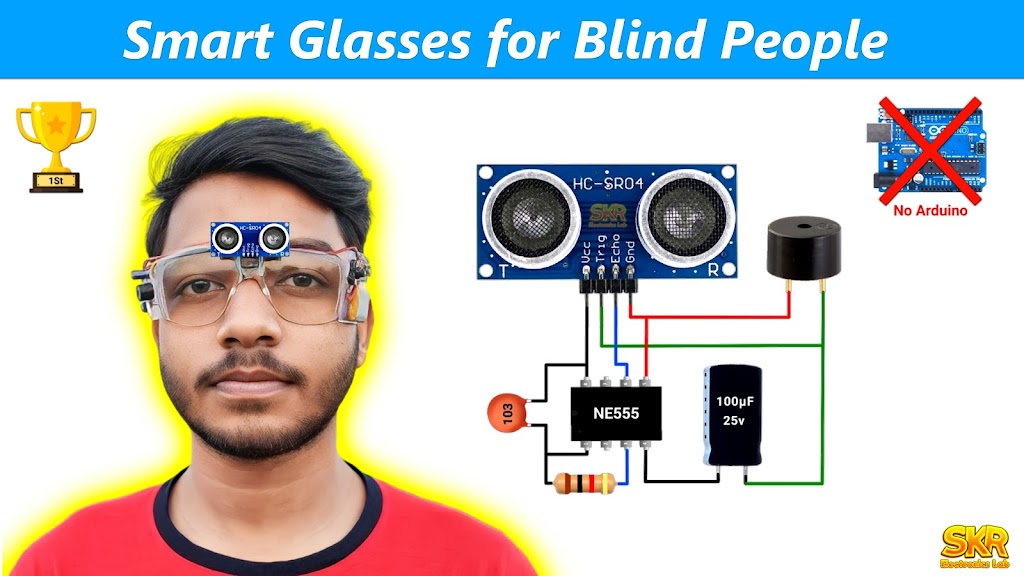How Smart Glasses for the Visually Impaired Are Revolutionizing Daily Life
Discover Advanced Assistive Devices for People With Aesthetic Impairments
The landscape of assistive technology for people with aesthetic impairments is progressing swiftly, presenting an array of ingenious gadgets that improve freedom and engagement. From smart glasses that effortlessly combine aesthetic input with acoustic advice to innovative navigating applications that redefine spatial awareness, these devices are reshaping opportunities.
Smart Glasses Innovations
Smart glasses represent a substantial innovation in assistive technology for people with aesthetic impairments. Geared up with cameras and sensing units, wise glasses can capture real-time visual information, which is then processed and communicated to the customer via sound responses or haptic experiences.
Additionally, improvements in fabricated intelligence have actually even more enhanced the capacities of wise glasses. Artificial intelligence formulas can acknowledge faces, checked out message, and recognize things, making them very useful tools for everyday jobs. Individuals can get acoustic signs that offer context about their environment, fostering freedom and confidence.
Additionally, the ergonomic design and lightweight nature of several smart glasses make them ideal for prolonged use, making sure convenience while enhancing functionality. As these tools remain to evolve, they hold the prospective to change the method people with aesthetic disabilities experience their day-to-days live, connecting the space in between accessibility and innovation. The ongoing research and development in this field promise to increase the possibilities for wise glasses, making them a necessary element of contemporary assistive gadgets.
Navigation Application and Devices
Countless navigation apps and tools have arised as essential sources for individuals with visual problems, significantly improving their capacity to traverse unfamiliar atmospheres. These modern technologies leverage GPS performance, audio cues, and real-time information to provide individuals with exact navigating help.
One famous example is the Aira app, which attaches customers to skilled representatives who can provide visual descriptions of surroundings and navigation assistance via a live video feed. This service boosts the customer's spatial recognition and self-confidence while navigating. One more significant tool is Seeing Eye GPS, which provides voice-guided navigation and factors of rate of interest, making it possible for customers to accessibility crucial information concerning their surroundings.

As innovation remains to breakthrough, the growth of much more sophisticated navigation devices promises to further empower people with aesthetic disabilities, assisting in smooth movement and combination right into diverse atmospheres. Such technologies contribute in promoting an extra inclusive society.
Braille Technology Improvements
In recent years, advancements in Braille innovation have actually significantly transformed exactly how individuals with visual disabilities accessibility information and involve with the world around them. The growth of mobile Braille display screens has actually reinvented reading by permitting customers to link wirelessly to smartphones, tablets, and computer systems. These gadgets convert text right into Braille in real-time, enabling smooth communication with digital content.
Moreover, innovative Braille article source printers have actually arised, boosting the manufacturing of tactile products. Modern embossers are quicker and a lot more efficient, permitting the quick development of Braille files and academic materials. This efficiency decreases the moment and expense related to creating Braille sources, making them a lot more obtainable to organizations and colleges.
In addition, the assimilation of Braille with other innovations, such as man-made knowledge and machine knowing, has opened up brand-new avenues for customized learning experiences. Voice acknowledgment and synthesis technologies can complement Braille, offering an inclusive method to details circulation.
As the need for comprehensive education and learning and workplace atmospheres expands, these technical improvements play a critical role in empowering people with aesthetic impairments, guaranteeing they have equivalent access to information and possibilities in various aspects of life.
Wearable Gadgets for Self-reliance
A growing range of wearable gadgets is boosting freedom for people with visual problems, supplying ingenious services that boost navigating and everyday living. Braille displays and notetakers. These devices make use of advanced technologies to offer real-time feedback and assistance, promoting freedom in various atmospheres

Wearable modern technology also includes smartwatches that can be set with ease of official statement access features, making it possible for users to receive notifications, track their areas, or even require aid with the touch of a switch. Some devices integrate synthetic intelligence to examine the setting, offering audio summaries of close-by objects or people.
Voice-Activated Assistive Solutions
Leveraging voice-activated assistive solutions has transformed the landscape of support for individuals with visual disabilities, offering hands-free communication and access to a variety of jobs. These innovations use all-natural language handling and expert system to make it possible for users to execute everyday tasks through straightforward voice commands.

Furthermore, current innovations in voice recognition precision have actually improved the individual experience substantially, fitting diverse accents and speech patterns. This inclusivity makes sure that more individuals can profit from these technologies, cultivating a greater sense of freedom.
Conclusion
Finally, the growth of advanced assistive gadgets significantly boosts the independence and quality of life for individuals with aesthetic problems. Innovations such as clever glasses, navigating apps, Braille modern technology, wearable gadgets, and voice-activated remedies jointly cultivate an even more comprehensive atmosphere. These technologies equip customers to navigate their surroundings with confidence and involve even more completely with the world, eventually advertising better access and level playing fields for individuals dealing with aesthetic obstacles.
The landscape of assistive modern technology for people with visual disabilities is evolving swiftly, offering an array of innovative devices that enhance freedom and interaction.Smart glasses represent a significant development in assistive modern technology for people with aesthetic impairments. As these gadgets continue to evolve, they hold the potential to revolutionize the method individuals with aesthetic problems experience their day-to-day lives, bridging the void between ease of access and modern technology.In recent years, developments in Braille innovation have actually considerably changed exactly how people with visual impairments accessibility details and engage with the world around them. These innovations empower customers to browse their environments with self-confidence and engage more completely with the globe, inevitably advertising higher accessibility and equal opportunities for people facing aesthetic challenges.